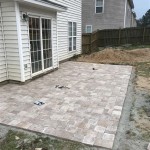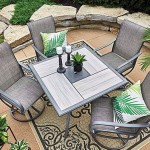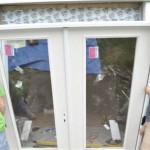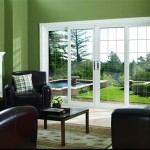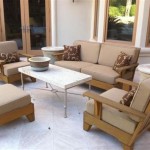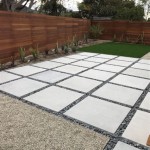Ideas for Providing Shade on Your Patio
Creating a comfortable and usable patio space often hinges on effective shade solutions. Direct sunlight can render even the most beautifully designed patio unusable during peak daylight hours, making shade a crucial element for outdoor enjoyment. Numerous options exist, ranging from relatively simple and inexpensive solutions to more elaborate and permanent structures. The ideal choice will depend on factors such as budget, desired level of shade, aesthetic preferences, and the patio's existing structural elements.
Consideration should be given to the orientation of the patio in relation to the sun. Patios facing south or west will generally require more robust shade solutions than those facing north or east. The local climate also plays a significant role; areas with intense sun and high temperatures will necessitate more effective shade than regions with milder summers. Furthermore, the intended use of the patio should be factored in. For instance, a patio used primarily for dining may require more complete shade to prevent food from spoiling and ensure comfortable eating conditions. A patio primarily used for lounging might benefit from dappled shade that allows for some sun exposure while still providing relief from the harshest rays.
Retractable Awnings: Versatility and Convenience
Retractable awnings present a flexible shade solution that can be easily adjusted to suit changing weather conditions. These awnings typically consist of a fabric canopy that extends and retracts either manually or via a motorized mechanism. When extended, the awning provides substantial shade, and when retracted, it allows for full sun exposure. This adaptability makes them a popular choice for patios that are used at various times of the day and in different weather conditions.
The fabric used in retractable awnings is typically durable and weather-resistant, designed to withstand exposure to sun, rain, and wind. Acrylic fabrics are a common choice due to their resistance to fading, mildew, and water damage. Some awnings also feature sensors that automatically retract the awning in strong winds, preventing damage to the structure. Installation typically involves attaching the awning to the exterior wall of the house, although freestanding models are also available. These freestanding models often require significant footing and can be more vulnerable to high winds.
The cost of a retractable awning can vary depending on the size, fabric, and operating mechanism. Manually operated awnings are generally less expensive than motorized models. Professional installation is recommended to ensure that the awning is properly secured and operates smoothly. Routine maintenance, such as cleaning the fabric and lubricating the moving parts, can help to prolong the lifespan of the awning. The overall aesthetic can be customized with a variety of fabric colors and patterns, allowing homeowners to match the awning to their existing landscaping and architectural style.
Pergolas and Arbors: Architectural Shade Structures
Pergolas and arbors are architectural structures that provide partial shade and create a visually appealing focal point in the patio area. These structures typically consist of vertical posts supporting a framework of horizontal beams or lattice. While they offer some shade on their own, they are often enhanced with climbing plants such as vines or roses to provide more complete coverage. The combination of the structure and the plants creates a natural and aesthetically pleasing shade solution.
Pergolas are generally larger structures designed to cover a significant portion of the patio area. They can be constructed from various materials, including wood, metal, and vinyl. Wood pergolas offer a natural and rustic look, but require regular maintenance to prevent rot and insect damage. Metal pergolas are more durable and require less maintenance, but may not have the same aesthetic appeal as wood. Vinyl pergolas are a low-maintenance option that is resistant to rot, insects, and fading.
Arbors are typically smaller and more decorative structures than pergolas. They are often used to define an entrance to the patio or to create a shaded walkway. Like pergolas, arbors can be constructed from a variety of materials and enhanced with climbing plants. The choice of climbing plants can significantly impact the amount of shade provided and the overall aesthetic of the structure. Deciduous vines, such as wisteria or grapevines, provide shade during the summer months and allow sunlight to pass through during the winter. Evergreen vines, such as ivy or clematis, provide year-round shade and privacy.
Shade Sails: Modern and Economical Options
Shade sails offer a modern and cost-effective way to provide shade on a patio. These sails are typically made from a woven fabric that is stretched between multiple anchor points, creating a tensioned canopy. The fabric is designed to block a significant amount of sunlight while allowing air to circulate, keeping the patio area cooler and more comfortable. Shade sails are available in a variety of shapes, sizes, and colors, allowing for creative and customizable shade solutions. Their geometric shapes bring a contemporary aesthetic to any outdoor space.
The installation of shade sails requires careful planning to ensure that the anchor points are strong and secure. The anchor points can be attached to existing structures, such as the house or trees, or to dedicated posts that are anchored in the ground. The tension of the fabric is critical to the performance of the shade sail. Too little tension will cause the fabric to sag and flap in the wind, while too much tension can damage the fabric or the anchor points. Professional installation is recommended, particularly for larger shade sails or complex installations.
The cost of shade sails is generally lower than that of retractable awnings or pergolas, making them an attractive option for homeowners on a budget. The fabric is typically durable and weather-resistant, but may require occasional cleaning to remove dirt and debris. Shade sails can be easily removed during the winter months to protect them from snow and ice. Because the fabric is usually permeable, water flows through the weave instead of pooling. This limits extra stress to the anchor points during periods of heavy rain.
Umbrellas: Portable and Flexible Shading
Patio umbrellas offer a readily available and flexible shade solution that can be easily moved as needed. These umbrellas typically consist of a large fabric canopy supported by a central pole and a weighted base. They are available in various sizes and styles, ranging from small cafe umbrellas to large cantilever umbrellas that can cover an entire seating area. Their portability makes them ideal for patios where shade is needed in different locations at different times of the day.
The fabric used in patio umbrellas is typically weather-resistant and designed to block a significant amount of sunlight. Solution-dyed acrylic fabrics are a popular choice due to their resistance to fading, mildew, and water damage. The frame of the umbrella is typically made from aluminum, steel, or wood. Aluminum frames are lightweight and rust-resistant, while steel frames are more durable but can be prone to rust if not properly maintained. Wooden frames offer a natural and aesthetically pleasing look, but require regular maintenance to prevent rot and insect damage.
The base of the umbrella is crucial for stability, particularly in windy conditions. Weighted bases are typically made from concrete, metal, or plastic and filled with sand or water. Cantilever umbrellas require particularly heavy bases to counterbalance the weight of the canopy. Proper care and maintenance can help to prolong the lifespan of a patio umbrella. This includes cleaning the fabric regularly, lubricating the moving parts, and storing the umbrella in a protected location during the winter months. Though relatively inexpensive, quality umbrellas can provide years of reliable shade.
Trees and Landscaping: Natural Shade Solutions
Incorporating trees and landscaping into the patio design can provide a natural and aesthetically pleasing shade solution. Trees offer a sustainable and long-term source of shade, while also enhancing the overall beauty and appeal of the outdoor space. Deciduous trees provide shade during the summer months and allow sunlight to pass through during the winter, creating a comfortable microclimate around the patio. The strategic placement of trees can also provide privacy and screen out unwanted views.
The choice of trees should be carefully considered to ensure that they are well-suited to the local climate and soil conditions. Fast-growing trees, such as maple or poplar, can provide shade relatively quickly, but may require more maintenance and pruning. Slow-growing trees, such as oak or beech, take longer to establish, but are generally more durable and require less maintenance. The size and shape of the tree should also be considered in relation to the patio and the surrounding landscape. Avoid planting trees too close to the house to prevent damage to the foundation or roof.
In addition to trees, other landscaping elements, such as shrubs, vines, and trellises, can be used to create shade and privacy. Climbing vines, such as wisteria or grapevines, can be trained to grow on pergolas or trellises, providing a dense canopy of shade. Shrubs can be planted around the perimeter of the patio to create a screen and provide additional shade. Integrating these natural elements into the patio design can create a relaxing and inviting outdoor space that is both functional and beautiful. Selecting appropriate plants for the climate and soil conditions minimizes maintenance and ensures long-term success.

11 Backyard Patio Shade Ideas To Take Outdoor Space The Next Level Pergolas And Structures Structureworks

Patio Shade How To My Outdoor Living Tips

12 Beautiful Shade Structures Patio Cover Ideas A Piece Of Rainbow

10 Patio Deck Shade Ideas Simplified Building

26 Patio Shade Ideas To Help You Stay Cool Timbertech

10 Shade Ideas For Backyards Patios Extra Space Storage

Patio Cover Ideas The Home

Colourtree 12 X 16 Rectangle Shade Sail Reviews Backyard Diy Patio Small Landscaping

8 Shade Structure Ideas From Summer 2024 S Top Outdoor Photos

Patio Shade Ideas Eoy The Outdoors In Any Weather Decoist

